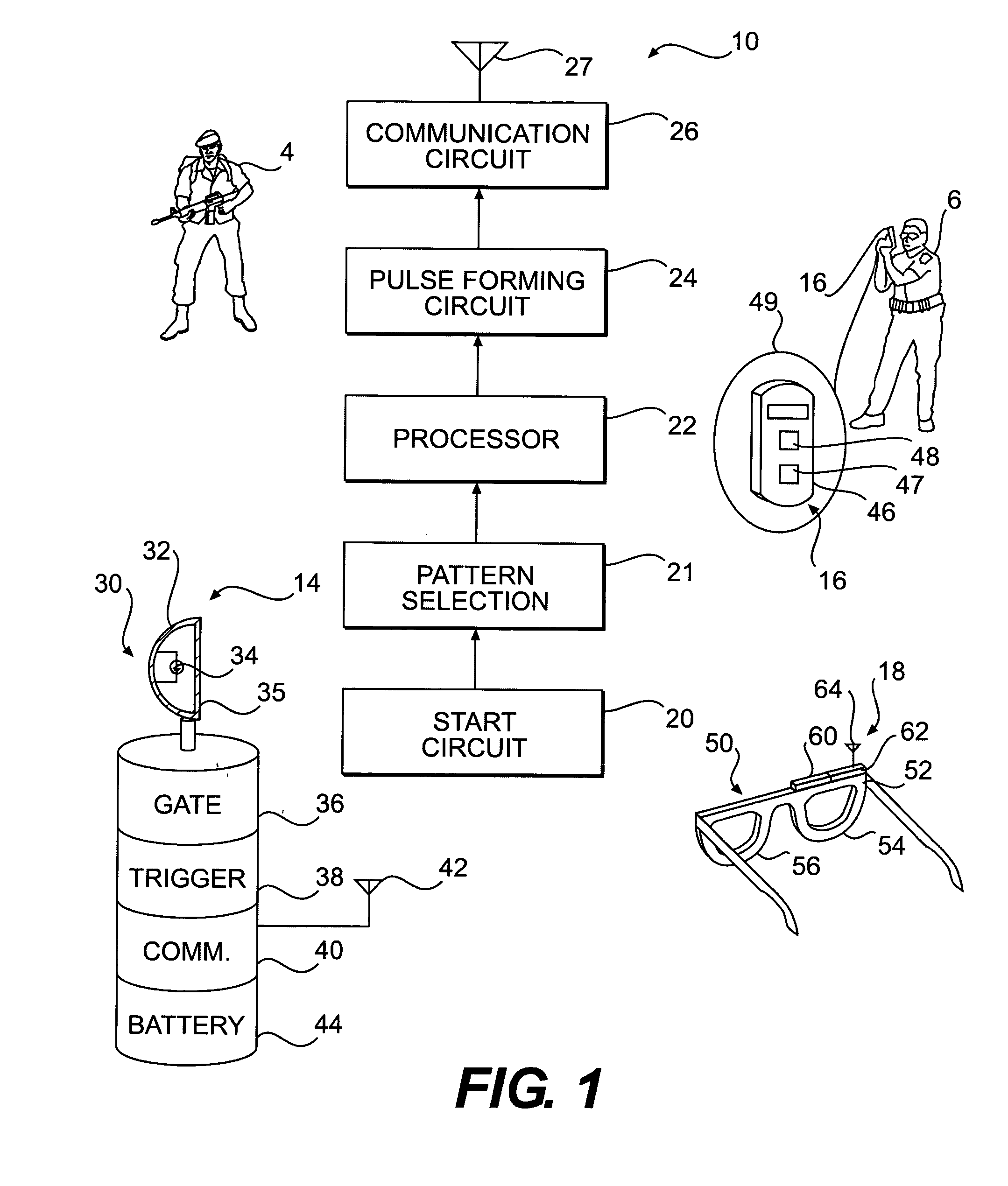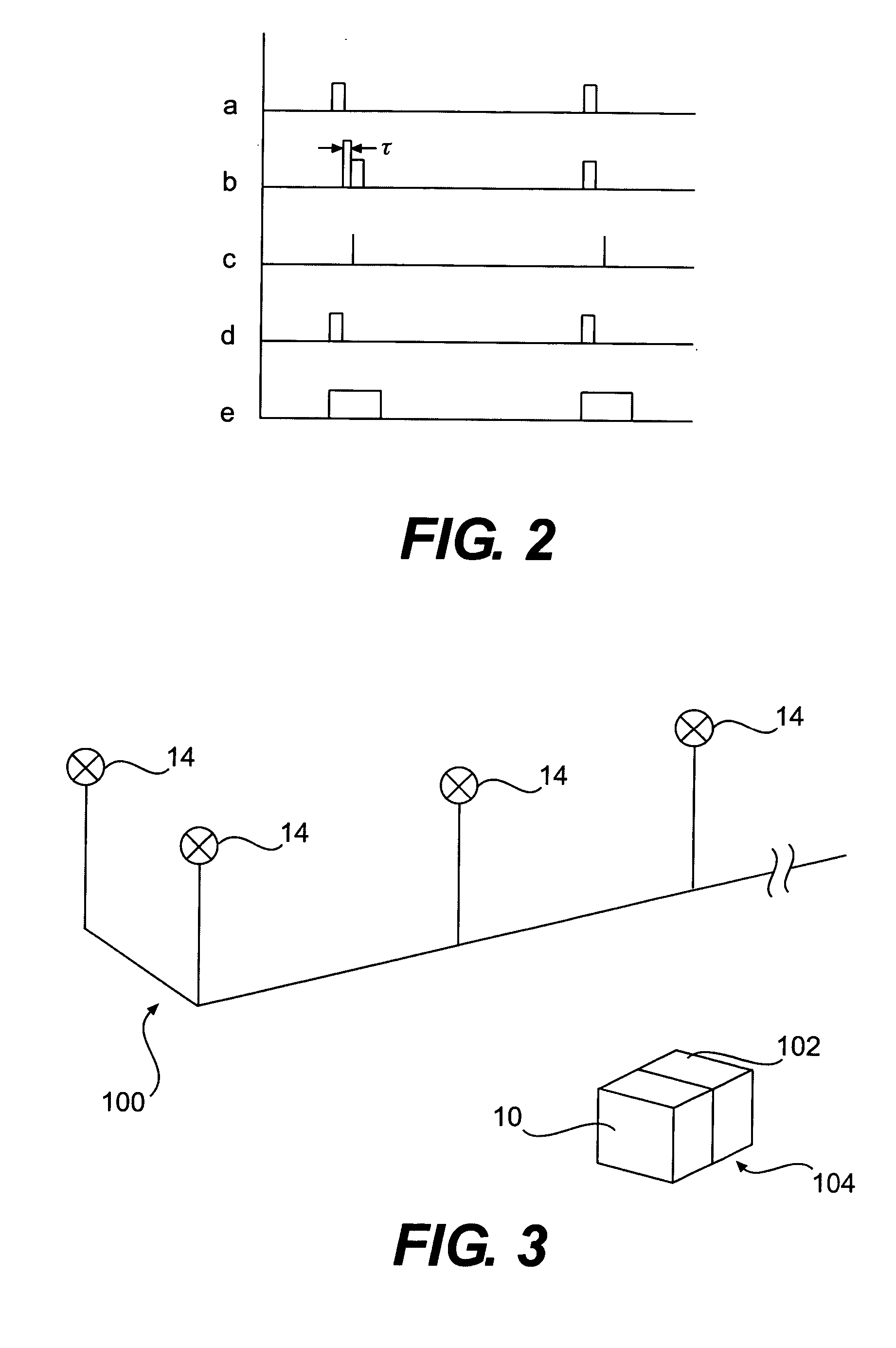High intensity photic stimulation system with protection of users
a high-intensity photic and user-protective technology, applied in the direction of counting objects on conveyors, applications, instruments, etc., can solve the problems of significant property damage, injury or death to others, and the urgency of restoring order cannot outweigh the undead use of deadly force on the civilian population, and achieve the effect of flash blindness
- Summary
- Abstract
- Description
- Claims
- Application Information
AI Technical Summary
Benefits of technology
Problems solved by technology
Method used
Image
Examples
Embodiment Construction
[0022]FIG. 1 is a block diagram of a system 1 constructed in accordance with an embodiment of the present invention. The system 1 is operable to provide flashing light for disabling a target subject 4 while providing a user 6 freedom to operate unimpeded by the flashing light. The target subject 4 is exposed to the disabling effects of the flashing light. Means are provided to render the flashing light virtually invisible to the user 6. “Target subject 4” or “user 6” may refer either to an individual or to a plurality of individuals. Individuals need not necessarily be human.
[0023] Subsystems in the system 1 comprise a control unit 10, a lighting subsystem 14 and a viewer subsystem 18. One or more control units 10 may be utilized at one time. The control unit 10 may be remote from the lighting subsystem 14 and the viewer subsystem 18. The control unit 10 could comprise a freestanding unit used on-site with the lighting subsystem 14. Alternatively or additionally, the control unit 1...
PUM
| Property | Measurement | Unit |
|---|---|---|
| Width | aaaaa | aaaaa |
| Frequency | aaaaa | aaaaa |
| Light | aaaaa | aaaaa |
Abstract
Description
Claims
Application Information
 Login to View More
Login to View More - R&D
- Intellectual Property
- Life Sciences
- Materials
- Tech Scout
- Unparalleled Data Quality
- Higher Quality Content
- 60% Fewer Hallucinations
Browse by: Latest US Patents, China's latest patents, Technical Efficacy Thesaurus, Application Domain, Technology Topic, Popular Technical Reports.
© 2025 PatSnap. All rights reserved.Legal|Privacy policy|Modern Slavery Act Transparency Statement|Sitemap|About US| Contact US: help@patsnap.com



